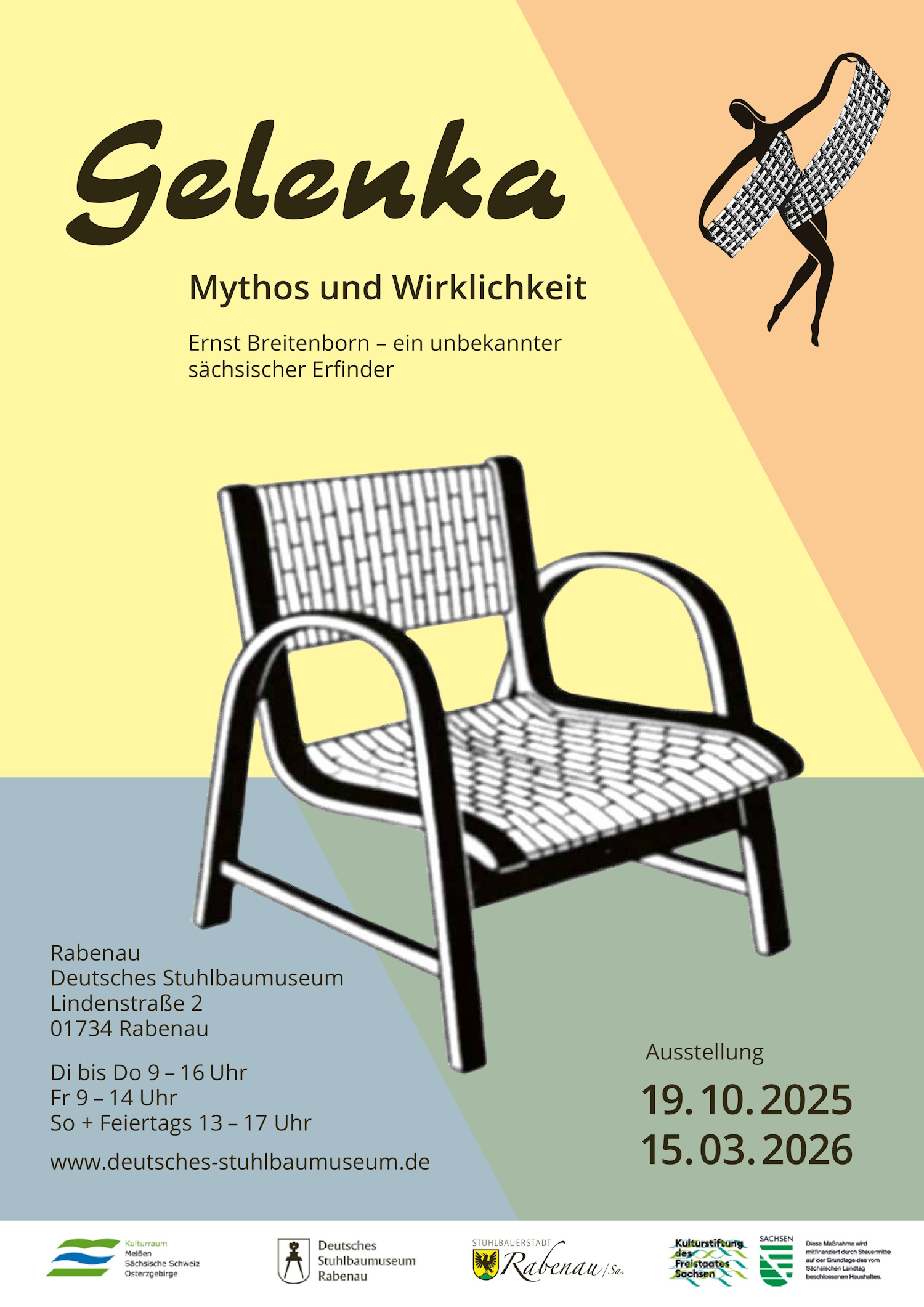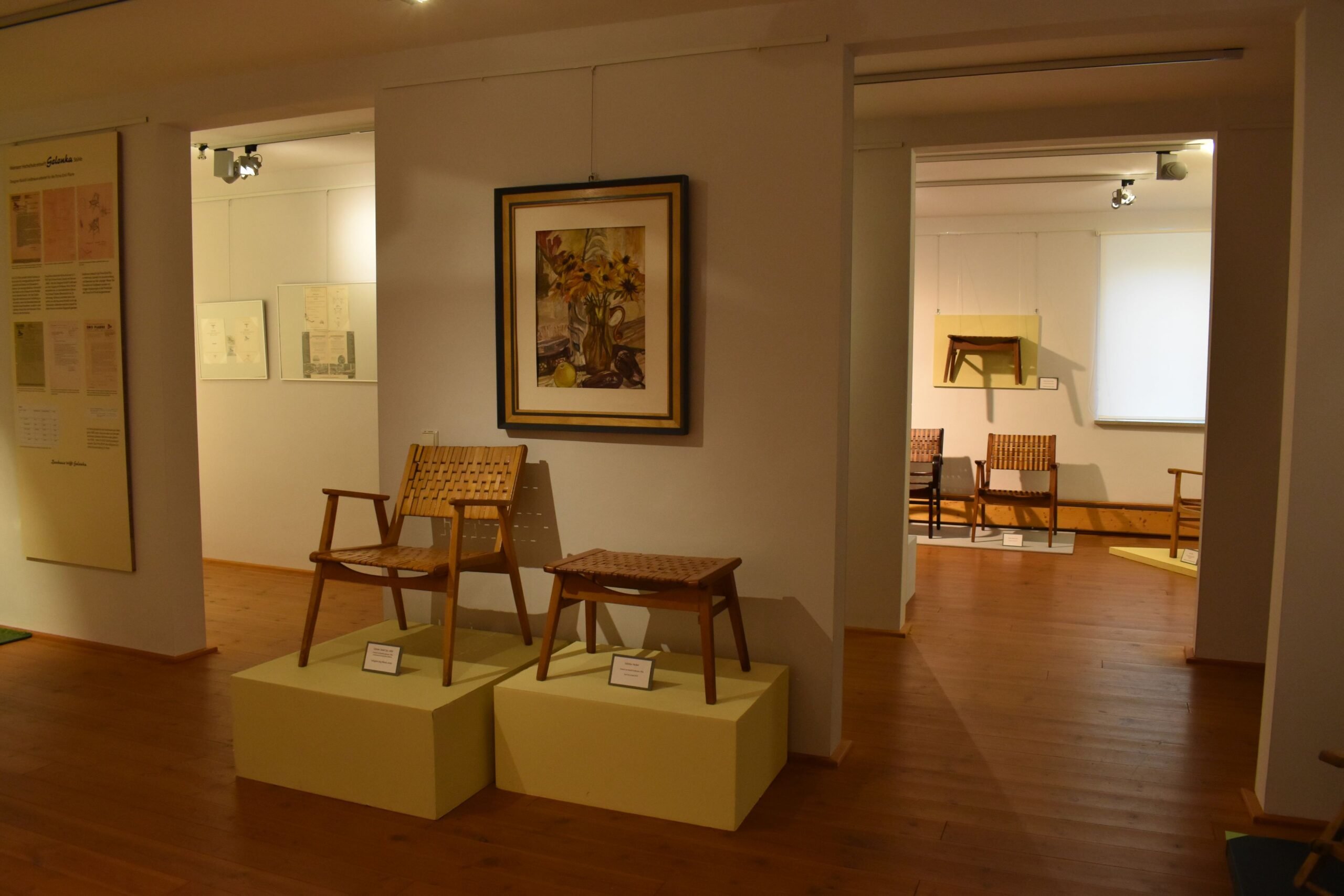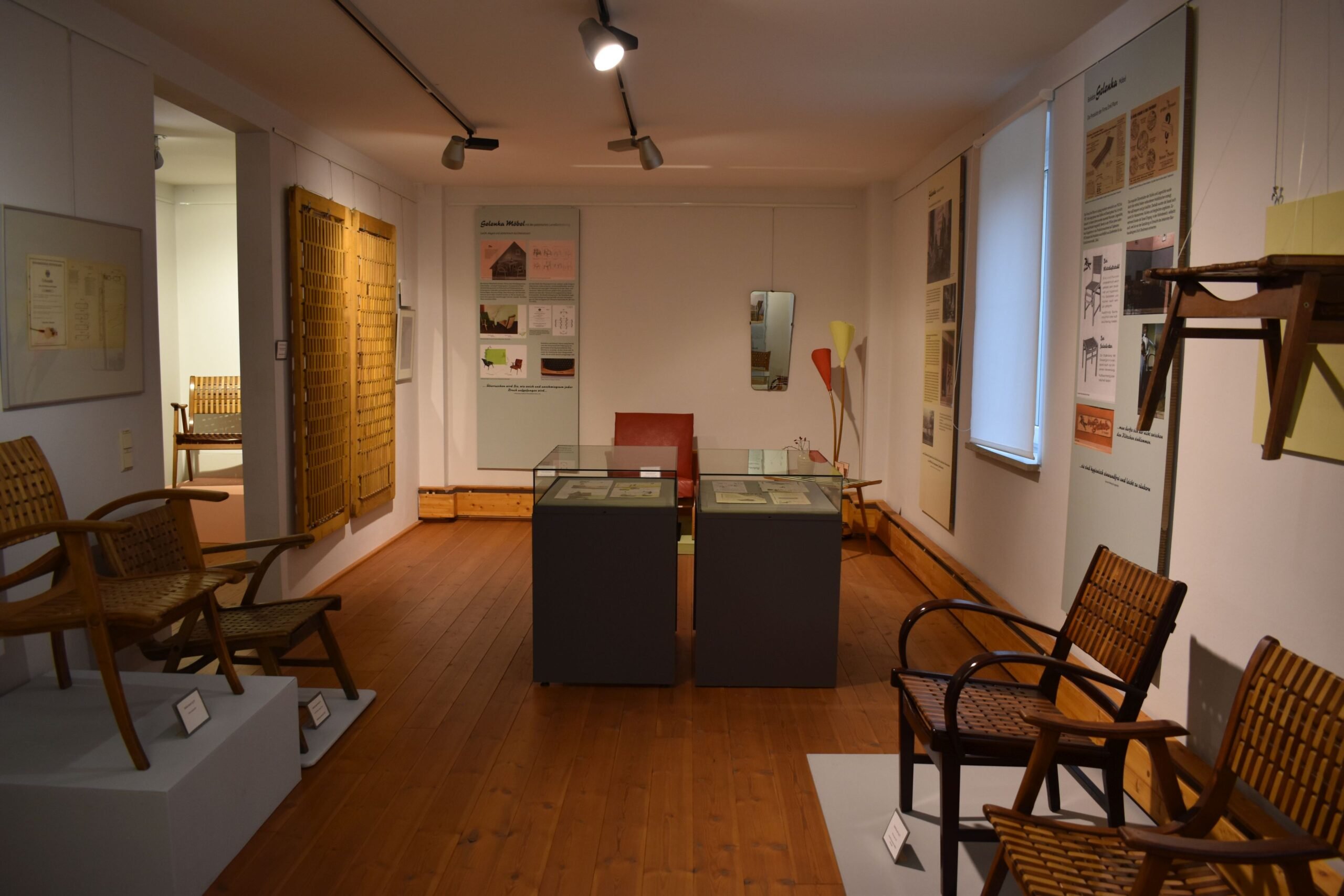Sometimes treasures lie where you least expect them. Rabenau is a tranquil little town in Saxony – but anyone familiar with its history will hardly be surprised to find that it hides a real gem. For centuries, the town was a centre of chair production – from traditional craftsmanship to industrial manufacturing. So it's no wonder that the German Chair Museum is located here today – a place where furniture history comes to life.

The museum is currently hosting a new special exhibition entitled "Gelenka – Myth and Reality", which sheds light on the fascinating history of Gelenka chairs. Why the exhibition "Gelenka – Myth and Reality"? Since 2002, the Rabenau Chair Museum has owned a pair of Gelenka chairs whose origin was initially unclear. It was not until 2019 that comprehensive research began, bringing to light the production sites, patents and variants. The current exhibition now presents, for the first time, a coherent documentation of the history of the chairs – from the beginnings of designer Ernst Breitenborn in Leipzig, through further developments in Wolfhagen/Kassel, to later imitations. The show combines design history, technology and the personal legacy of its inventor with the production histories of the manufacturers involved.
At first glance, a chair seems like an everyday object – but Gelenka chairs have a history that is worth discovering. Anyone who sits here is literally sitting in the middle of a piece of German design history.
At first glance, the chairs appear simple and unassuming – but their technical design is extraordinary. The seat and backrest surfaces consist of small, movably connected wooden elements that flexibly yield with the aid of a spring mechanism. This system ensures a surprisingly high level of seating comfort and is reminiscent of a joint, whose mobility is reflected directly in the name: "Gelenka".
For a long time, the chairs were mistakenly attributed to the Bauhaus or well-known designers such as Erich Dieckmann. In fact, however, the original designs date back to the 1950s and 1960s and were created by Ernst Breitenborn and the Leipzig-based company Emil Plarre, which produced over 100,000 copies. Their clear design language reveals influences from modern design, but at the same time forms a very distinctive constructive signature.


The special exhibition "Gelenka – Myth and Reality" offers an in-depth insight into:
Production of the chairs at Emil Plarre, Leipzig The long-established company produced over 100,000 Gelenka chairs until 1972. Designer Rudolf Großmann developed further models and variants.
Continuation of Breitenborn's work in Wolfhagen/Kassel After fleeing the GDR, Breitenborn continued his work in the West and experimented with new upholstery materials such as foam rubber. A rare original piece of upholstery was recovered from a private attic.
Design history and influences The exhibition shows how modern design approaches – such as those of Erich Dieckmann – are reflected in the Gelenka design language, without any direct connection to the Bauhaus. Earlier patents, further developments and interpretations complement the historical context.

The museum invites all owners of Gelenka chairs or documentation relating to the companies involved to participate. Whether old photos, invoices, catalogues or original documents – every piece of information helps to continue writing the history of these chairs. Interested parties can contact the museum and contribute their items or knowledge. In this way, visitors themselves become part of the exciting research work and help to keep the story of Gelenka chairs alive.
From 19 October 2025 to 15 March 2026, the museum will be presenting this fascinating journey through design, craftsmanship and innovation. The project was sponsored by the Cultural Foundation of the Free State of Saxony, the Meissen – Saxon Switzerland – Eastern Ore Mountains Cultural Area and the town of Rabenau.
Conclusion: Whether you are a design enthusiast, furniture fan or simply a curious visitor, this exhibition is a must-see. And who knows, you might just discover your ultimate favourite chair while trying it out.

19 October 2025 – 15 March 2026 German Chair Museum Rabenau Tuesday to Thursday from 10 a.m. to 4 p.m., Friday from 10 a.m. to 2 p.m., Sunday and public holidays from 1 p.m. to 5 p.m.
Photos copyright courtesy of: Rabenau Chair Museum